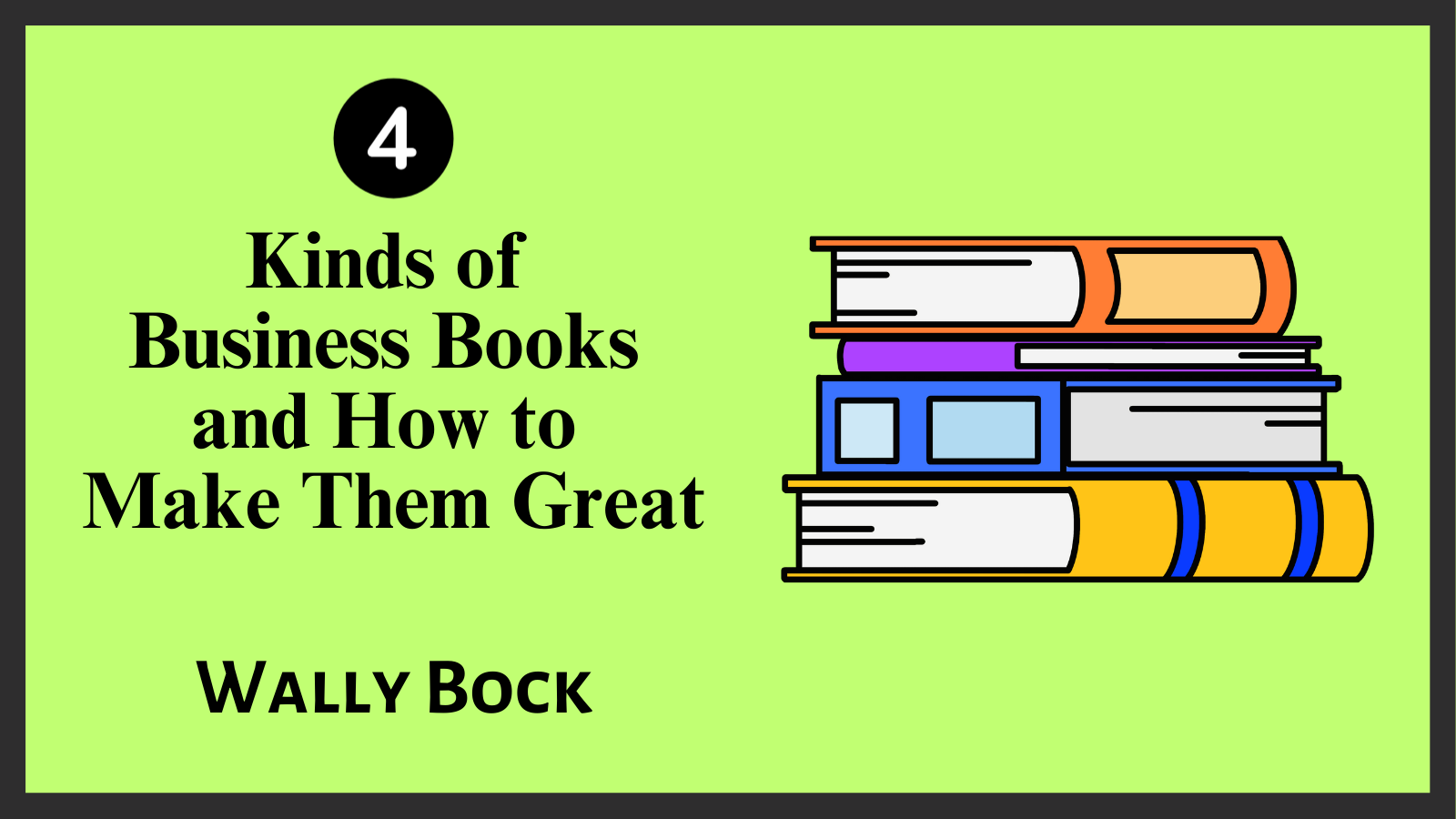When clients come to me for the first time, they usually have a pretty good idea of what they want to write about. Normally, they haven’t done much to plan their book. That starts with deciding what kind of book they choose to write.
There are, conservatively speaking, about four gazillion business books published every year. Even though there are books beyond counting, they all fall into one of four basic categories. When you choose the category of the book you plan to write, you can do what’s necessary to succeed and avoid common pitfalls.
The How-To Book
A how-to book teaches the reader how to do one or a few specific things. When you write a how-to book, you assume the role of a teacher. Even though how-to books are often fairly short, they may be the most difficult kind of book to write. That’s because of the curse of knowledge.
The curse of knowledge is that you can’t remember what it was like not to know something. When you know a subject well, it’s hard to see it through the eyes of a beginner. The way to beat the curse of knowledge is to explain your ideas to someone who doesn’t know them. My pick for the best person to do this is an intelligent 15-year-old.
Intelligent 15-year-olds know enough to understand pretty much anything you’d have to say. They’re not likely to be experts in your field. Plus, they’re fearless, and they’re sure you’re one of those old people who really doesn’t know anything. Whether you choose an intelligent 15-year-old or not, you need to test your material on people who don’t know anything about it.
In addition to taking steps to defeat the curse of knowledge, you should do things that make it easier for your reader to learn what you have to teach. Charts, graphs, and other structured writing elements will help. So will illustrations.
Here are three examples of excellent how-to books. *
The Coaching Habit
Thrive: Ten Prescriptions for Exceptional Performance as a Commercial Real Estate Agent*
The Psychological Safety Playbook
The Big Issue Book
When you write a big issue book, your goal is to have the reader finish your book with a better understanding of things that will make his or her life better. You’ll probably make suggestions about what the reader should do with their new knowledge, but your suggestions will be more general than a how to book.
Your challenge is to combine research, examples, and key points in an easy-to-read package. You will be tempted to write like a textbook. Bad move. Substituting fact-stacking for storytelling either puts readers to sleep or inspires them to close the book early. Writing that maintains a brisk pace wins the day.
Here are three examples of excellent big-issue books
The Friction Project
The Fearless Organization
The Leadership Challenge
The Hero’s Journey Book
Hero’s journey books are books about a person or a business challenge. Sometimes they’re called “business history” or “business memoir.” You are the storyteller.
Your big challenges will be structure and selection. You’ll have many different stories that you can tell, but you can only choose a few. Choose the ones that will have the greatest impact. There are several different ways to structure a book like this, you need to choose the one that works best.
Then, you have to make sure that everything works together. That’s tougher than it sounds. References in one part of the book need to match similar references in another part of the book. If you tell a story more than once, be sure it makes a slightly different point the second time.
Here are three examples of excellent hero’s journey books.
Shoe Dog
The Idea Factory
Moneyball
Hybrids
Not all business books fall neatly into one category or another. Your book may be a combination of two categories. Here are three examples.
Some books combine big issues with how to. Suzie McAlpine’s Beyond Burnout* is one such book. Suzie wrote about burnout in the workplace—that’s the big issue. She supplemented that with special sections for individuals who are burned out, people who supervise others with burnout, and senior executives who set the tone and culture for the organization.
Some books combine heroic and how-to. A common example is any book that tells the story of several people and draws conclusions from the totality of the stories. Rod Santomassimo’s book Brokers Who Dominate* is one of those.
A book can also combine an issue with a hero’s journey. In Creativity, Inc., Ed Catmull tells his story and the story of Pixar and how they struggled to create both creative products and a creative organization.
Deciding on the kind of book you want to write is important. It’s not a game of pin the category on the book. Instead, it’s a way for you to identify what kind of book you’re writing and what it takes to create a great book.
*Indicates a book I worked on.
